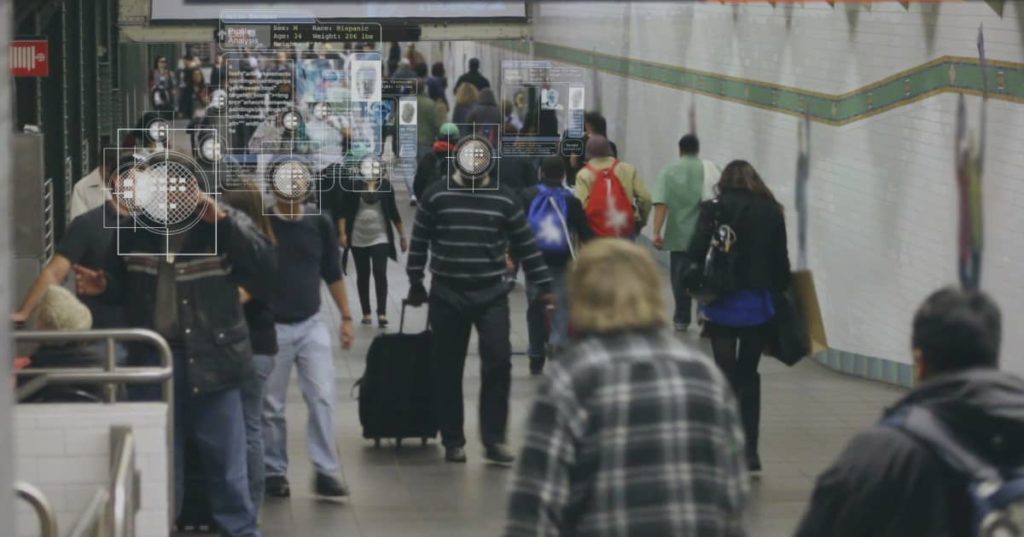U.S. Rolling Out Biometric ID Exit Program In Top Airports Nationwide With Full Implementation Expected By 2021
by Aaron Kesel, Activist Post:

Activist Post previously reported that the U.S. Department of Homeland Security (DHS) wanted to develop advanced facial recognition technology that scans the faces of travelers as they enter and leave the U.S. border checkpoints. Last year we saw those efforts have expanded to airports with numerous tests throughout the U.S. However, now according to 346 pages of documents obtained by the nonprofit research organization Electronic Privacy Information Center, those efforts are expanding even more with plans of implementing the technology in as many as 20 different top airports by 2021, as a part of U.S. President Donald Trump’s “Biometric exit” agenda, which was originally signed into law under the Obama administration, BuzzFeed News reported.
Customs and Border Protection began testing facial recognition systems at Dulles Airport in 2015, then expanded tests to New York’s JFK Airport and airports in Atlanta.
This, of course, is following a hidden directive within an executive mandate signed by U.S. president Donald Trump in his immigration order on January 27th of 2017 — best known for suspending visitors to the U.S. from seven majority-Muslim countries — also included an article expediting the biometric exit program. The order further stated that there will be three progress reports to be made over the next year on the program. Trump’s executive order in March built on that by specifically limiting biometric scans at the border to “in-scope travelers” or those who aren’t U.S. or Canadian citizens.
According to the documents, the CBP’s stated goal here is to “identify any non-U.S. citizens subject to the exit requirements who may fraudulently present” travel documents. The agency said it had “no plans to biometrically record the departure of U.S. citizens.” But the CBP also said it “does not believe there is enough time to separate U.S. citizens from non-U.S. citizen visitors prior to boarding” … “therefore, facial images will be collected for U.S. citizens as part of this test so that CBP can verify the identity of a U.S. citizen boarding the air carrier.” CBP said that once a traveler is identified and confirmed as a U.S. citizen, their images are deleted.
However, a key problem when it comes to using the technology inside airports is the lack of restrictions on how airlines, airport operators, and other commercial third parties can use or disclose data collected under government mandate. Also, we must ask how long this data will be retained and how do we know the government will follow its commitment to delete the data?
Elsewhere in the world, facial recognition and the use of biometrics can be seen all over starting to emerge. In Malta, Prime Minister Joseph Muscat recently confirmed plans to implement facial recognition into the CCTV surveillance cameras around the country’s zones.
“The police are doing a good job but there’s a lot of work that still needs to be done to step up enforcement,” Muscat said in an interview on ONE Radio today. “We are looking into safe city concepts to prevent antisocial behaviour, whereby CCTV systems with technology that can identify law-breakers can do away with the need to have police stationed 24/7 in certain areas.”
For more on facial recognition technology and what’s to come for our future in every aspect of society including travel and retail, see this writer’s previous article “The Rise Of Facial Recognition Technology Is Now Inevitable.”
Six major U.S. airports, including Boston, Atlanta, and New York’s Kennedy Airport, completed trials started under the previous Obama administration in airports, while other tests were held under the Trump administration from 2017 to 2018. Biometric surveillance is even expanding to border crossings, bridges, and train stations. As previously stated, the rise of facial recognition technology is now inevitable. Last year the MTA ran a test program announcing they will enable cameras near bridges, tunnels, and roadways in New York to recognize the faces of drivers and passengers.
In 1996, Congress authorized automated tracking of foreign citizens as they enter and exit the U.S. In 2004, DHS began biometric screening of foreign citizens upon arrival.
This is all sure to just enrage privacy advocates everywhere even more and spur protest against the new suggested Orwellian system. Privacy advocates have long opposed biometric screening of immigrants.
Already privacy advocates have sounded the alarm and argued that the implementation of the biometric scanners in airports and elsewhere would be a huge step towards a surveillance state, and they’re absolutely right.
“Homeland Security has never consulted the American public about whether Americans should be subject to face recognition,” said Harrison Rudolph, a law fellow at the Center on Privacy & Technology at Georgetown Law, in a blog post.
“What’s even worse is there is good reason to think Homeland Security’s face recognition systems will be expanded,” including to TSA checkpoints before a flight, he said.
Privacy advocate groups, attorneys, and even recently Microsoft, which also markets its own facial recognition system, have all raised concerns over the technology, pointing to issues of consent, racial profiling, and the potential to use images gathered through facial recognition cameras as evidence of criminal guilt by law enforcement.
“We don’t want to live in a world where government bureaucrats can enter in your name into a database and get a record of where you’ve been and what your financial, political, sexual, and medical associations and activities are,” Jay Stanley, an attorney with ACLU, told BuzzFeed News about the use of facial recognition cameras in retail stores. “And we don’t want a world in which people are being stopped and hassled by authorities because they bear resemblance to some scary character.”
Congress has agreed several times in the past to extend face scans on foreign nationals leaving the US, but critics say that lawmakers never intended for Americans to also become subjected to the new measure.
“Congress has passed Biometric Exit bills at least nine times,” said Rudolph. “In each, it has been clear: This is a program meant for foreign nationals.”
U.S. Customs and Border Protection considers its jurisdiction to be anything within 100 miles of the border, so naturally one of the privacy questions for Americans is whether this tech would be deployed inside the United States.
In 2017, Homeland Security clarified their position on domestic spying stating Americans who don’t want faces scanned leaving the country “shouldn’t travel.”
“The only way for an individual to ensure he or she is not subject to collection of biometric information when traveling internationally is to refrain from traveling,” the DHS wrote in a document.
The DHS desires to use facial recognition technology to better track and record approximately 1 million foreign travelers who each year enter and exit the United States, with a rough estimate of 300,000 traveling by plane.
Loading...



